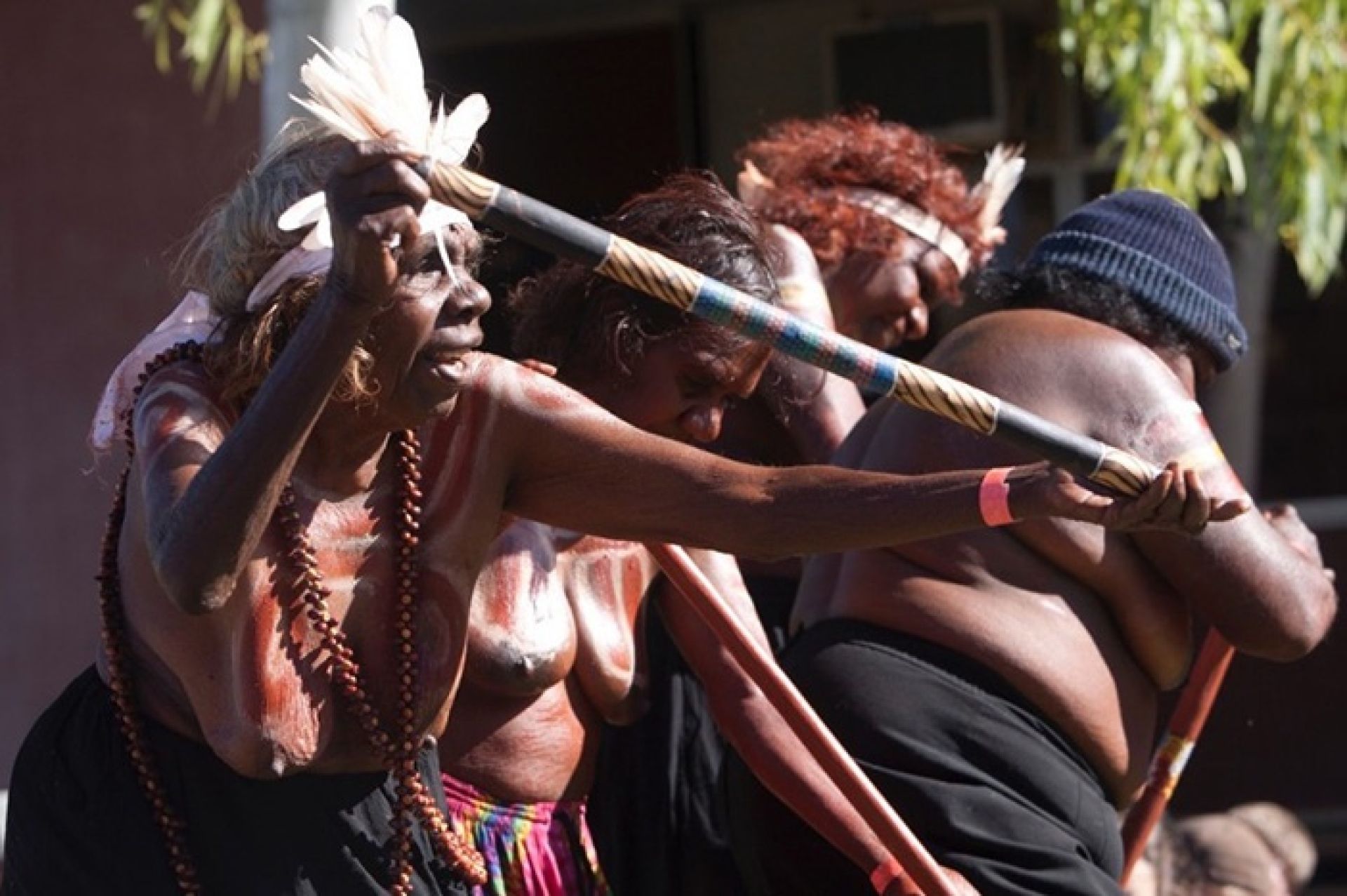

Aboriginal women from the Anmatyerr and Warlpiri language groups from Central Australia and Kam minority women from South Western China have joined together for a musical exchange at the Sydney Conservatorium of Music.
For both groups, singing inspires feelings of home – longing and belonging. In this unique cultural exchange these two groups gave joint performances of their traditional songs on April 12th, showcasing their distinct Indigenous musical cultures and bringing to life their translations and imagery for a world-first concert.
The public performance accompanied the book launch of ‘Songs of Home’ from Batchelor Press and was hosted by Nyungar/Hakka actress and singer Kylie Bracknell with translations by Australian-based Chinese musician Lui Lu and Anmatyerr teacher April Ngampart Campbell.
The Songs of Home book is in two parts – one part is dedicated to the Anmatyerr group and has been written by April Ngampart Campbell and Myfany Turpin. The other part is written by Catherine Ingram, a musicologist based at the University of Sydney who has worked with Kam people for many years documenting song traditions. The book presents background on each group, such as information about their country and language and profiles of the artists from each group.
The book is the latest in a series of traditional music publications from Batchelor Institute Press produced in association with the Centre for Australian Languages and Linguistics. Batchelor also has a strong relationship with the Anmatyerr women of Ti-Tree and has recently published another book with these women – Travelling to Angenty Country.
Anmatyerr and Warlpiri are the two main language groups at Ti-Tree in central Australia Northern Territory. These women perform traditional songs called awely / yawulyu which relate to their homelands. The group is led by cultural leader Clarrie Kemarr Long whose ceremonial knowledge and songs feature in the Batchelor Press book Mer Angenty-warn alhem. Travelling to Angenty Country, and the film documentary Mer Rrkwer akert. The group will perform songs from their country and explain the relationship between the songs, their lands and the family relationships that bind the songs, lands and people together.
Kam (in Chinese, Dong 侗) minority people have an officially registered population of approximately 3 million, most of whom are resident in southwestern China (Guizhou Province, Hunan Province and the Guangxi Zhuang Autonomous Region). The first language of many Kam people, particularly those living in rural Southern Kam areas, is a dialect of Kam—a Tai-Kadai family language that is completely different from Chinese and has no widely used written form. Kam communities have faced massive social transformations in recent decades due mainly to youth migration for employment along China’s eastern seaboard.
Kam women will be performing a variety of songs from the many different Kam song genres, including choral Kam big songs. Big song was inscribed on UNESCO’s Representative List of the Intangible Cultural Heritage of Humanity in 2009, under the title “Grand Song of the Dong Ethnic Group”. The singers will explain and demonstrate how important knowledge, concepts and ideas about their home region are represented and conveyed in song.
Words by Chelsea Heaney.
